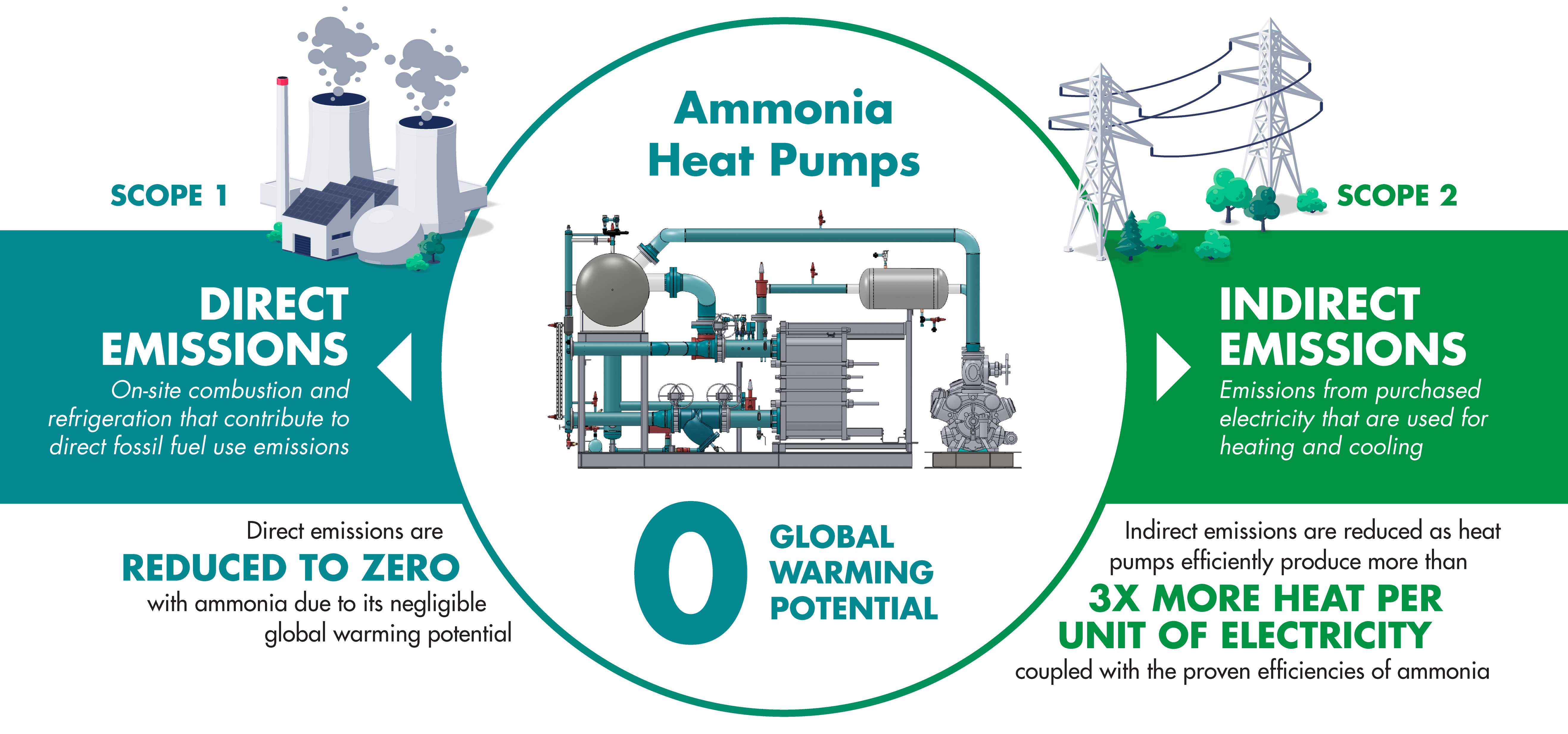Refrigerant choice is pivotal in the pursuit of sustainable operations. For industrial heat pumps (including those used in district heating and cooling applications), the tried and tested ammonia (R717) refrigerant is the real standout. It offers exceptional efficiency, reliability, and environmental sustainability—while being easily available and affordable too. Why should you consider ammonia for your facility?
Next-Level Performance
The chemical stability of ammonia (NH3) guarantees reliable performance even in demanding industrial settings. It also boasts remarkable thermodynamic properties that make it an ideal refrigerant to use in large heat pumps. With its proven high coefficient of performance (COP) in this application, ammonia facilitates efficient heat transfer at a wide range of temperatures. This makes ammonia a suitable refrigerant for a myriad of applications—from ice rinks to district heating, and everything in between.
Enhanced Efficiency
Ammonia heat pumps exhibit exceptional efficiency thanks to their ability to use captured waste heat from industrial processes as a primary heat source. By leveraging this waste heat, they significantly decrease the necessity for additional fossil fuel-based heating systems, thereby effectively curbing greenhouse gas emissions associated with traditional heating methods (such as natural gas boilers).
4226559e-f643-4dc2-bbbc-ebed3ab0b4cd.png?sfvrsn=805db22_1)
Moreover, CIMCO-engineered heat pumps can reliably produce temperatures of up to 180 degrees Fahrenheit (82 degrees Celsius), making them even more appealing for industrial applications. These heat pumps can also be seamlessly integrated with renewable energy sources like solar or wind power, further diminishing dependence on fossil fuels and reducing overall emissions.
Reduced Environmental Impact
Ammonia is not a contributor to ozone depletion, the greenhouse effect, or global warming— it has a zero global warming potential (GWP) and a zero ozone-depleting potential (ODP). Thus, it is an environmentally friendly refrigerant. As a result, the adoption of ammonia heat pumps in industrial operations (including district heating and cooling applications) not only has the ability to reduce both scope 1 (direct) and scope 2 (indirect) emissions but can also mitigate environmental harm, making it a win-win for both businesses and the planet.

Affordability and Availability
Beyond its environmental benefits, ammonia offers practical advantages in terms of affordability and availability. As ammonia is a naturally occurring substance that is widely and easily available globally, it cannot be patented, ensuring a stable cost that is often far less than that of chemically manufactured fluorinated alternatives. This makes ammonia an attractive option for businesses seeking sustainable solutions without breaking the bank.
Future proof
Thanks to its low GWP, ammonia is not subject to global legislation aimed at phasing out fluorinated refrigerants. This gives facility managers the peace of mind that their heat pump will not have to be decommissioned before its useful end of life due to a certain refrigerant being phased out.
CIMCO's Green Future
As we navigate the transition towards a greener future, ammonia has an important role to play in decarbonizing the industrial sector, especially when paired with sustainable heat pumps that can capture and reuse waste heat.
The widespread adoption of industrial ammonia heat pumps in all applications represents a significant step forward in the journey toward emissions reduction and environmental conservation. By leveraging the efficiency, reliability, and environmental sustainability of ammonia refrigerant, businesses enhance their operational efficiency while simultaneously contributing to global efforts to combat climate change—without increasing costs.
Related Posts

Bayshore Community Center

Comparison of Key Refrigeration System Components: Making the Right Choice for Your Operation

Decarbonization Trends Shaping Industries
|
|



